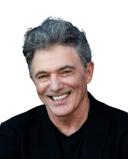Cognitive Dissonance
Cognitive Dissonance Group Opinion and the Fall of Lance Armstrong
How to cope with a fallen hero
Posted August 24, 2012
In 1957 Leon Festinger published a theory of cognitive dissonance, which has become a central focus of research in social psychology for over half a century. The theory points out that our cognitive process has a bias, what Festinger called “dissonance reduction”. In other words whenever there are conflicting information and considerations we try to find consonance in one of three ways. We make one of the factors less important, add components to our thinking to make greater harmony with our thoughts, or simply change one of the dissonant aspects. If you ever had that little talk with yourself about ordering dessert then you know about dissonance reduction. The conflicting information is that the double fudge chocolate dipped brownie is famously delicious and you are five pounds overweight. The dissonance reduction strategies you might use are: The size of the dessert isn’t large and I don’t have to eat it all; I will workout a little longer tomorrow morning; and my personal favorite; I shouldn’t worry about one little dessert.
Lance Armstrong generates dissonance. The man who became famous for never giving up is giving up. He is a winner and a loser. Yesterday he was quoted as saying "I refuse to participate in a process that is so one-sided and unfair."With his unimaginatively weak statement the man who almost single-handedly galvanized attention interest and fascination on the Tour De France and raising consciousness and money and funds for cancer has admitted to being another sports hero impostor. If there would have been truth behind his innocence Lance Armstrong would have fought this, and he did his own cancer, until he was victorious. But this giving up is as clear an admission of wrongdoing as can be, and also stops the U.S. Anti-Doping Agency from testifying about anything else they might know about him, including10 former teammates ready to testify against him. Lance Armstrong is a survivor and a liar; an incredibly strong man, and an incredibly weak man; a source of inspiration, and a source of disgrace and embarrassment; a hero and a villain. In short he has become the modern day exemplar of cognitive dissonance.
The theory of cognitive dissonance would predict that people would strive for dissonance reduction by using these three strategies. In other words groups will form as people use one of three dissonance reduction strategies. They might sound something like this:
- “He shouldn’t have to keep defending himself against these charges. He was right to give up.”
- “It doesn’t matter that they stripped him of his titles because he has already done so much good in the world.”
- “We don’t need false heroes to raise money for cancer treatment, there are plenty of other good people to do that.”
But these biases nudge us away from reality. The truth now is that Lance Armstrong is both good and bad; inspiring and despicable; a legend and fake.
My hope is that another group forms based on allowing two truths to remain intact. The struggle is in trying not to make this dissonance even out, take it away, or stop it. Instead the work is to try and leave the truth as it is: Lance Armstrong is profoundly human.


